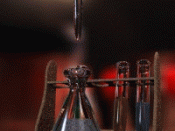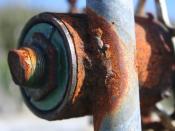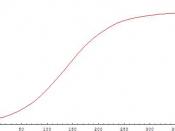Introduction and Preliminary Results.
There are five factors which affect the rate of a reaction, according to the collision theory of reacting particles: temperature, concentration (of solution), pressure (in gases), surface are (of solid reactants), and catalysts. I have chosen to investigate the effect temperature and concentration have on a reaction. This is because they are the most practical to investigate - it would take longer to prepare a solid in powdered and solid form, and it is difficult to get accurate readings due to the inevitabilities of human errors. Gas is mostly colourless and it is difficult to measure a reaction changing the pressure, and if a substance is added to give the gas colour, it may influence the outcome of the experiment. Similarly, the use of a catalyst complicates things, and if used incorrectly it could alter the outcome of the experiment. A reaction, basically, takes place when there are successful collisions between the particles of the reactants involved.
The more energy that is present in reaction, the quicker it will be, as the particles involved can collide more successfully. If there is a higher concentration of the reactants present, successful collisions are increased because there are more particles present in them. If a catalyst is added, the particles need less energy to collide successfully, also increasing the reaction speed. Any reaction can be speeded up if the number of successful collisions can be increased.
For this assignment, we investigated and the different factors that affect the rate of a reaction. I chose hydrochloric acid (HCl) and sodium thiosulphate (N2 S2 O3) as my reactants. When sodium thiosulphate and hydrochloric are mixed, a yellow precept of sulphur is produced. The solution becomes increasingly difficult to see through as more and more sulphur is formed. We can measure how...


